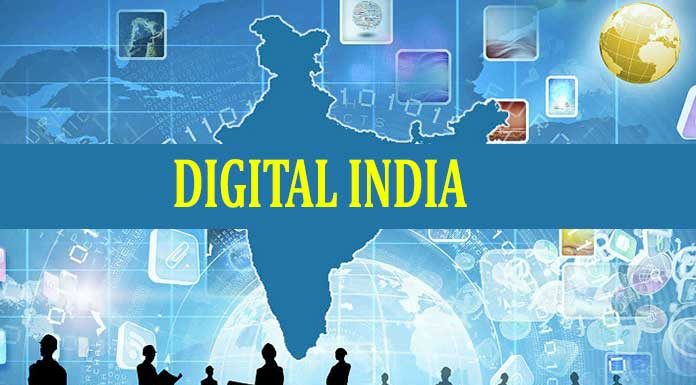Digital transformation has been a key priority for governments across the globe for quite some time now. And the Indian public sector has also been really focussed on its agenda of creating a Digital India. In the past few years, we have seen an amplified effort in this direction with almost all public sector enterprises adopting the best-in-class digital initiatives. The reason for doing this is simple — enabling better citizen services.
Technology imperatives have been constantly changing; serving the citizens with a new level of speed, convenience and personalisation at all possible touchpoints are now on top of the governments agenda. As part of the Technology Consulting at EY, Pankaj Khurana, Partner, EY India has seen a number of emerging trends in the Indian Public Sector landscape very closely.
He told TechObserver.in: “I would say that one important factor is the maturity level in the department officials because, in the earlier phase of e-governance, I felt that the bureaucracy was still struggling to deal with the technocrats and that contributed significantly in terms of the lack of preparedness on our part to be able to respond to the changing trends at that point in time. But lately, our bureaucracy has also geared up and the technocrats have also joined various government ministries and initiatives which has helped in changing this landscape.”
The second factor according to him is that the government has lately realised the potential of inter-departmental connection. So, instead of creating all the systems in silos, now the focus is on how can they be interoperable with each other in order to share and exchange the information and be supportive of each other and look into the value of the data and information which is being created, first individually and then in a collaborative manner.
m-Governance: The way forward for digitisation
Looking at the current pandemic situation, it has been the endeavour of the government to make its services paperless, contactless and faceless and it has been able to achieve these goals to a good extent. The recent developments in m-Governance and e-Governance across India are actually a testament to this development.
According to Khurana, in the times that we are in currently, mobile governance is playing a very important role not just in the context of the government but also in the context of the private sector sitting at home and receiving various services through e-commerce.
“We are getting food delivered at home, we are also consulting our doctors by video calls and we are exploiting the social media platforms for important things like asking for oxygen and hospital beds. Mobiles are playing a very critical role in our lives. We also need to realise that while it is so important, only 40% of our population have smartphones. It has impacted the delivery of services to particular strata of society,” he said.


Partner, Government & Public Sector Consulting, EY
He stressed: “We have come a long way and seen the evolution of e-commerce. We have seen the evolution of government services being delivered to people through their mobiles. And now, it is time to reach those people who have not been able to benefit from these. These are a few things that I am looking forward to coming into effect in order to explore the full potential or at least 80% of the potential of mobile governance in our country.”
Overcoming challenges on the way
No journey that has been successful has been without roadblocks. And so has been the case with digital transformation initiatives as well. Heading towards the real digital revolution, there have been certain challenges India is facing but the government is taking some proactive steps to overcome them.
India is a very diverse country, not only in terms of population and languages but in terms of demography also. There are areas that are still unexplored or areas where the population living there is a couple of centuries behind in terms of the urban population.
“Our endeavour is to support the government not only in the domains that EY is very specific to, but about how we can make the government realise the potential of the emerging technologies that we are helping other governments across the globe with, and how we can leverage those experiences and deliver it to the Indian government,” says Pankaj Khurana of EY.
“Secondly, now is the time for us to create the platforms. I think while we realise the importance and potential of creating platforms, we are yet to walk the talk. So, it is important to work on how we can make these platforms exhaustive, how we can make these platforms exchange information with each other and ensure that there is just one face of the government in terms of service delivery. These are a few of the challenges that we still need to address and solve,” he explained. Khurana believes that it is really critical to find ways to address these challenges. “We need to find a way to do the capacity building of people, reach out to every single person in the country to make them realise their citizens charter and their eligibility for various schemes, and deliver it through mobiles or through some other means. I think that is one challenge from the service delivery point of view,” he said.
Partnering for success
Partnerships play a very important role in determining the success of digital transformation initiatives. They help in understanding the key challenges and also suggest the right kind of interventions that are needed. The government too has been very appreciative of the kind of support many partners have rendered towards making India digital. According to Khurana, one such successful partnership has been with EY India. EY has helped governments deliver a superior, engaging ‘digital experience' to next-gen citizens in more ways than one.
Khurana said that EY has always believed in thought-led discussions with the client and creating those opportunities. “It is not like we only respond to the RFPs or the requirements that are listed by the government, but we have been a part of some of the projects and some of the innovations which have taken place in the government in the last two decades in terms of service delivery or in terms of creating the stacks and platforms, etc. Hence, our contribution has been and should be on how we can continue the thought and innovation-led conversations with the government, and create new models and new frameworks where government platforms are looked into in a comprehensive manner. This would be our endeavour.”
He adds that going beyond that, it is not only in the domains that EY is very specific to, but about how it can make the government realise the potential of the emerging technologies that they are helping other governments across the globe with, and how they can leverage those experiences and deliver it to the Indian government. He said: “This is something that we endeavour to accomplish.”
Exponential technologies for a digital future
Exponential technologies like hybrid cloud, digital workspaces, data centre modernization, cybersecurity among others are playing a major role in the success of government transformation and have helped build a comprehensive services framework.
The government cannot be independent of the technology revolution that is happening across the globe. It has to be in sync with that otherwise it will be very difficult for it to keep up the pace. According to Khurana, the government's e-marketplace is a very good example of how the Amazons and the Flipkarts of the world can be replicated in the government sphere. “There are many stories like this and Cloud is no more just a means to store and access data for that matter, cybersecurity and other emerging technologies are no more just a privilege of the private sector. The government is equally invested and is an equal stakeholder in this,” he states.
According to Khurana, the last decade has been a watershed moment in terms of the government adopting digital. Indian public sector enterprises have state-of-the-art data centres and have developed state-of-the-art Clouds and they have also implemented state-of-the-art cybersecurity.
“Information is king today and information or data is the new oil as they say, so protection is also needed in that context. Therefore, cybersecurity has become a mandatory requirement. So, all of these emerging technologies are not just good-to-have but are mandatory, especially in the current circumstances and the government is equally watchful, equally invested in and innovating In all of these technologies,” Khurana said.
Public Sector Digital Transformation Pulse
1) To what extent do you perceive exponential technologies are disrupting the government/public sector?
- Moderately
2) How much has your organisation/department been impacted by evolving digitalisation trends?
- Great Extent
3) How satisfied are you with the progress your organisation made in the last year when it comes to adopting exponential technologies to transform business processes?
- Very Satisfied
4) Is your organisation's digital transformation dictated more by internal or external pursuits?
- Both Internal and External
5) What are the top mandates while pursuing digital transformation initiatives at your organisation?
- Gains to productivity/output
- Improved safety/security
- Better citizen services
- Ability to leverage insights from data
6) Suppose your organisation was provided with sufficient resources to fund all its digital transformation priorities. What items would receive the greatest share of resources?
- Cybersecurity
- Digital Services
- Advanced Data Analytics
- Intelligent Automation (RPA)
- Artificial Intelligence/Machine Learning







